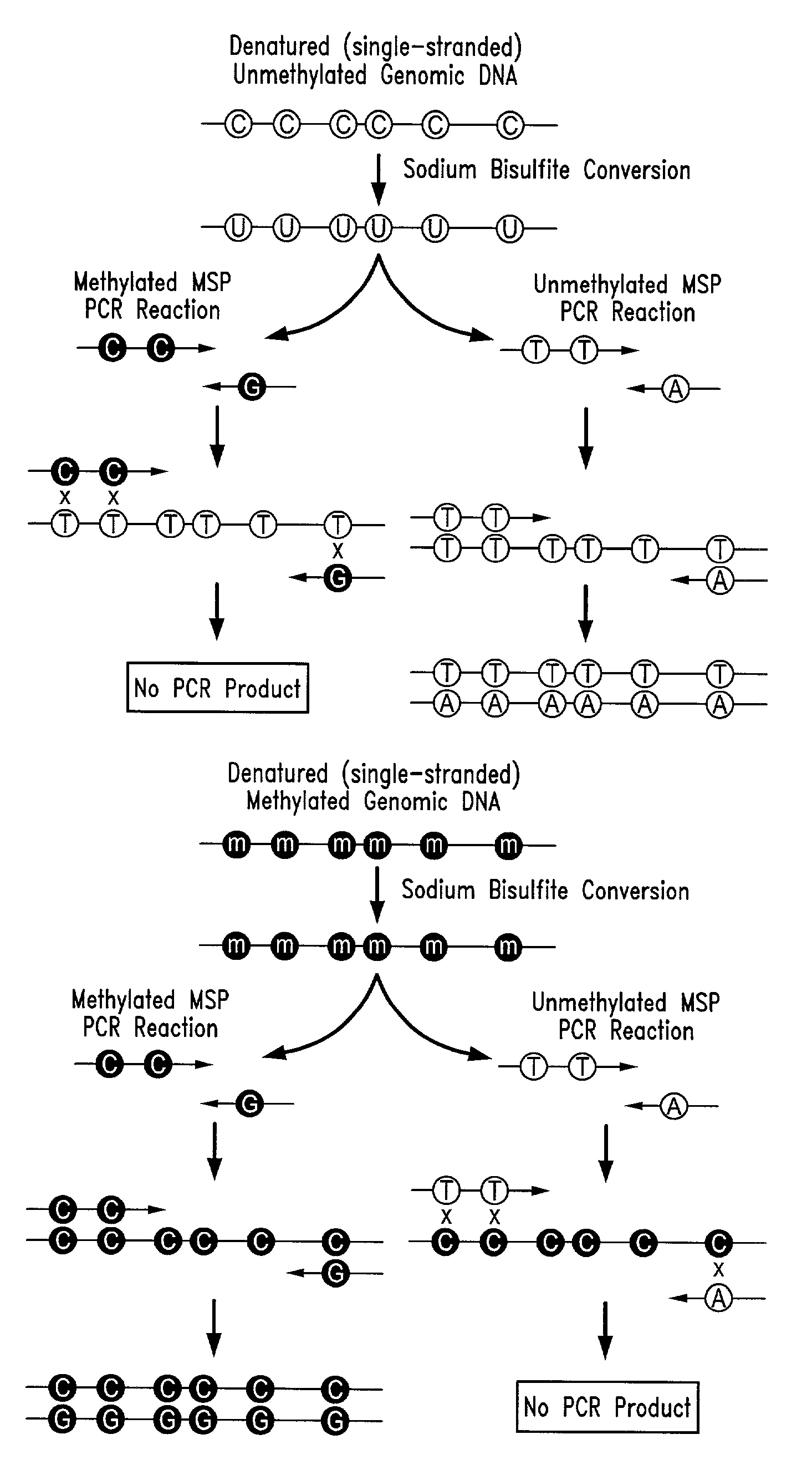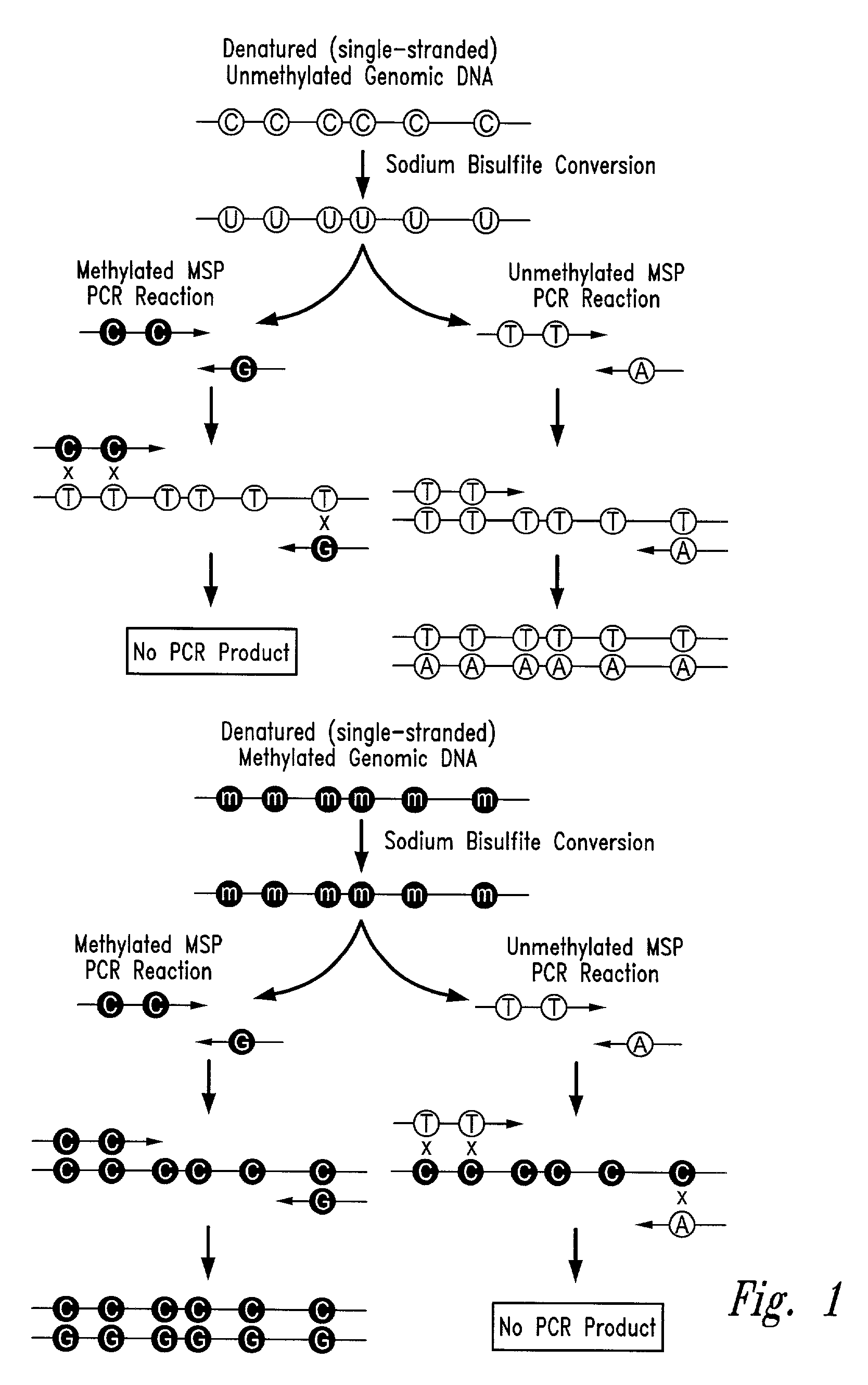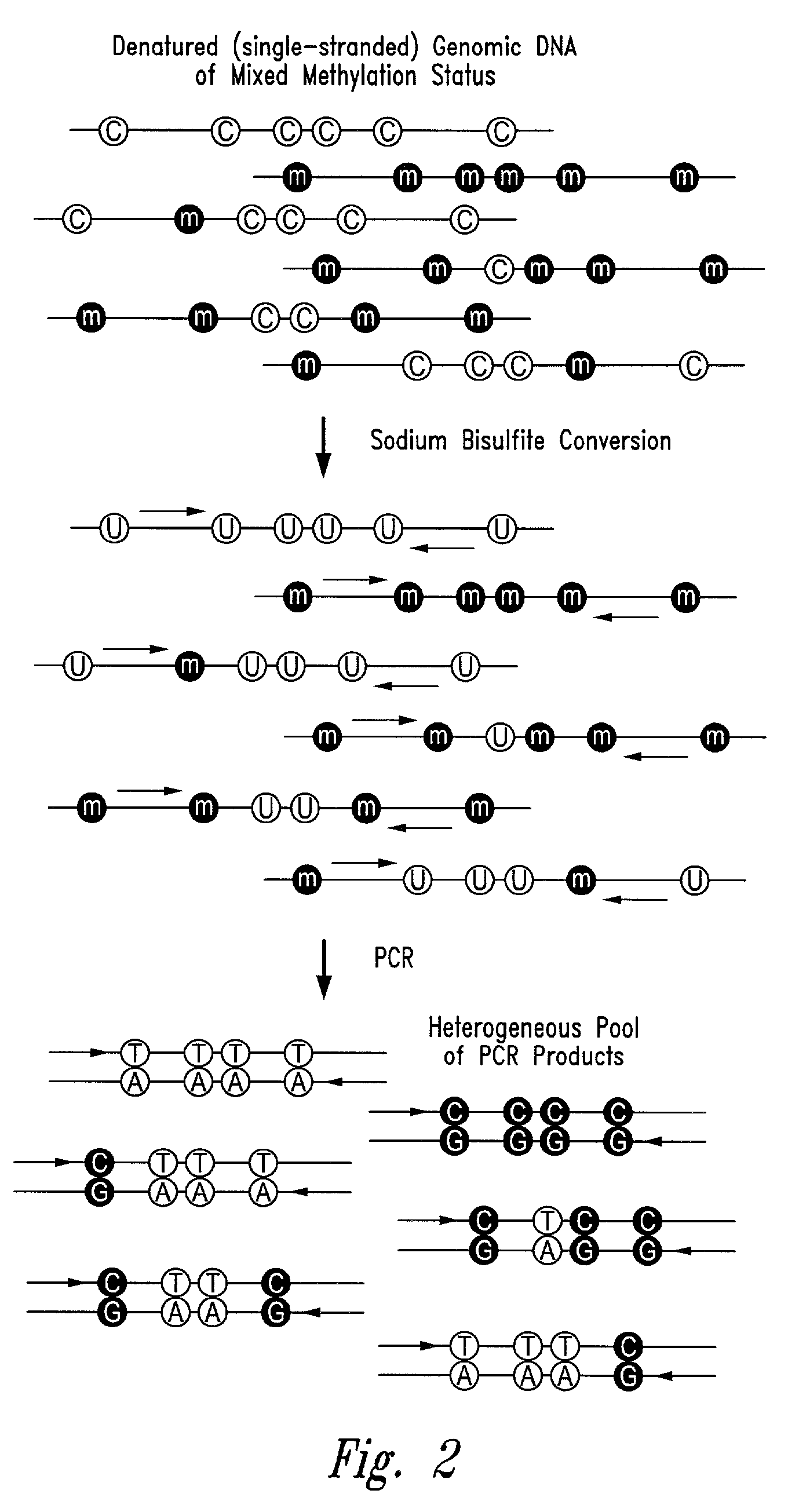Process for high throughput DNA methylation analysis
a methylation analysis and high throughput technology, applied in the field of high throughput dna methylation analysis, can solve the problems of limited scope for analysis of cpg sites, genome instability, and potential alteration of gene expression by methylation
- Summary
- Abstract
- Description
- Claims
- Application Information
AI Technical Summary
Benefits of technology
Problems solved by technology
Method used
Image
Examples
example 1
[0072]An initial experiment was performed to validate the inventive strategy for assessment of the methylation status of CpG islands in genomic DNA. This example shows a comparison between human sperm DNA (known to be highly unmethylated) and HCT116 DNA (from a human colorectal cell line, known to be highly methylated at many CpG sites) with respect to the methylation status of specific, hypermethylatable CpG islands in four different genes. COBRA (combined bisulfite restriction analysis; Xiong and Laird, Nucleic Acids Res. 25:2532–2534, 1997) was used as an independent measure of methylation status.
[0073]DNA Isolation and Bisulfite Treatment.
[0074]Briefly, genomic DNA was isolated from human sperm or HCT116 cells by the standard method of proteinase K digestion and phenol-chloroform extraction (Wolf et al., Am. J Hum Genet. 51:478–485, 1992). The DNA was then treated with sodium bisulfite by initially denaturing in 0.2 M NaOH, followed by addition of sodium bisulfite and hydroquino...
example 2
[0088]This example is a comparison of the inventive process (A and D in FIG. 3) with an independent COBRA method (See “Methods,” above) to determine the methylation status of a CpG island associated with the estrogen receptor (ESR1) gene in the human colorectal cell line HCT116 and in human sperm DNA. This CpG island has been reported to be highly methylated in HCT116 and unmethylated in human sperm DNA (Xiong and Laird, supra; Issa et al., supra). The COBRA analysis, is described above. Two TaqI sites within this CpG island confirmed this, showing a lack of methylation in the sperm DNA and nearly complete methylation in HCT116 DNA (FIG. 5A). Additionally, results using bisulfite-treated and untreated DNA were compared.
[0089]For an analysis, fully “methylated” and fully “unmethylated” ESR1, and control MYOD1 primers and probes were designed as described above under “Example 1.” Three separate reactions using either the “methylated,”“unmethylated” or control oligos on both sperm and ...
example 3
[0090]This example determined specificity of the inventive primers and probes. FIG. 6 shows a test of all possible combinations of primers and probes to further examine the specificity of the methylated and unmethylated oligonucleotides on DNAs of known methylation status. Eight different combinations of the ESR1 “methylated” and “unmethylated” forward and reverse primers and probe (as described above in “Example 1”) were tested in different combinations in inventive assays on sperm and HCT116 DNA in duplicate. The assays were performed as described above in Example 1. Panel A (FIG. 6) shows the nomenclature used for the combinations of the ESR1 oligos. “U” refers to the oligo sequence that anneals with bisulfite-converted unmethylated DNA, while “M” refers to the methylated version. Position 1 indicates the forward PCR primer, position 2 the probe, and position 3 the reverse primer. The combinations used for the eight reactions are shown below each pair of bars, representing duplic...
PUM
| Property | Measurement | Unit |
|---|---|---|
| Fluorescence | aaaaa | aaaaa |
Abstract
Description
Claims
Application Information
 Login to View More
Login to View More - R&D
- Intellectual Property
- Life Sciences
- Materials
- Tech Scout
- Unparalleled Data Quality
- Higher Quality Content
- 60% Fewer Hallucinations
Browse by: Latest US Patents, China's latest patents, Technical Efficacy Thesaurus, Application Domain, Technology Topic, Popular Technical Reports.
© 2025 PatSnap. All rights reserved.Legal|Privacy policy|Modern Slavery Act Transparency Statement|Sitemap|About US| Contact US: help@patsnap.com



